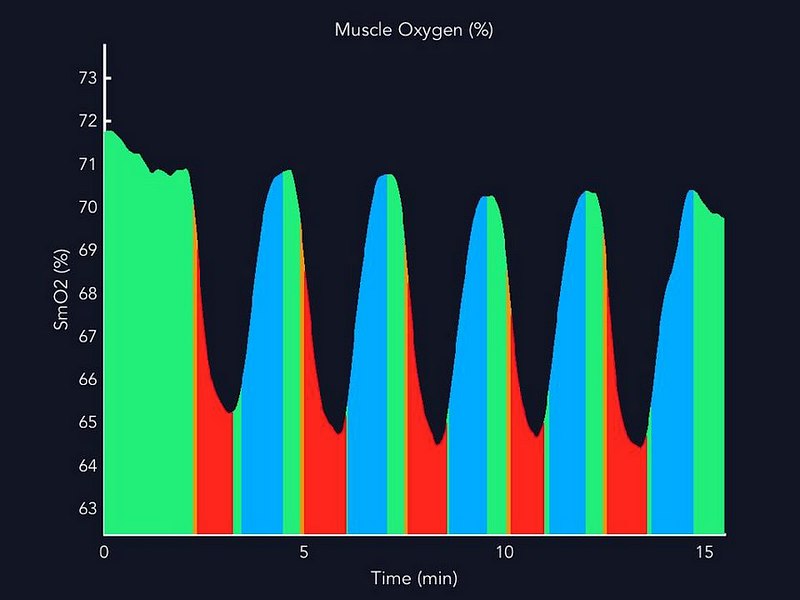
Using Muscle Oxygen to Create the Perfect Interval Workout
Just about every athlete includes some form of interval training in his or her workout regimen. Interval training typically involves periods of high intensity activity followed by a recovery phase.
If you’ve ever done interval training then you’ve probably asked yourself challenging questions, such as:
- How long should my interval and recovery phases be?
- How hard have I pushed myself during each set?
- How many intervals should I complete before my workout is over?
Athletes will often choose their interval and recovery times based on experience or standard interval workouts. Following a specific interval workout is great as a guideline, but the truth is there is no one-size-fits all interval routine. The optimum interval and recovery times vary between athletes based on their goals and fitness levels.
Using Muscle Oxygen to Guide Interval Workouts
The best way to build an interval program unique to you is to know exactly when you have reached your anaerobic threshold and how long it takes your muscles to recover. Measuring muscle oxygen levels in the working muscle is a great metric for this because it will identify that threshold and the time it takes to recover. In other words, MuscleOx can prescribe you with the perfect interval and recovery times.
Interval Workout Guided By MuscleOx
Here is an example of a cyclist guiding their interval training using MuscleOx. It is important to note that each interval was completed at the same power.

During the athlete’s first interval at high intensity, his MuscleOx starts to decrease until his anaerobic threshold is reached — indicated by the red zone. Upon reducing intensity, his MuscleOx levels begin to rise — indicated by the blue zone. Once they begin to plateau and the green zone is reached, his muscles have fully recovered and he is ready for his second interval set.
A summary of the cyclist’s interval workout:
- Set 1: 135 s interval; 76 s recovery phase
- Set 2: 80 s interval; 62 s recovery phase
- Set 3: 81 s interval; 61 s recovery phase
- Set 4: 71 s interval; 63 s recovery phase
- Set 5: 74 s interval; 71 s recovery phase
What you will notice is that the athlete was able to identify the optimal duration of each interval and recovery time. You will also notice that the intervals are getting shorter as the workout progresses because of muscle fatigue. The recovery times are also starting to increase by the 5th interval. Another indicator of fatigue is when the maximum MuscleOx values during recovery are not able to reach the maximum percentage that was observed at the beginning of the workout.
Takeaway
If you are looking to maximize your results it is important to build interval workouts that are unique to you because there is no one-size-fits all interval routine. It is also important to understand exactly how your body is responding during the interval and recovery phases. MuscleOx is a good metric for this because it will prescribe the perfect interval and recovery times, and show you when you are fatigued, minimizing risk of overtraining. You can also monitor progress by seeing how the interval and recovery durations change overt time. As you improve, interval times will lengthen while recovery times will be reduced.

